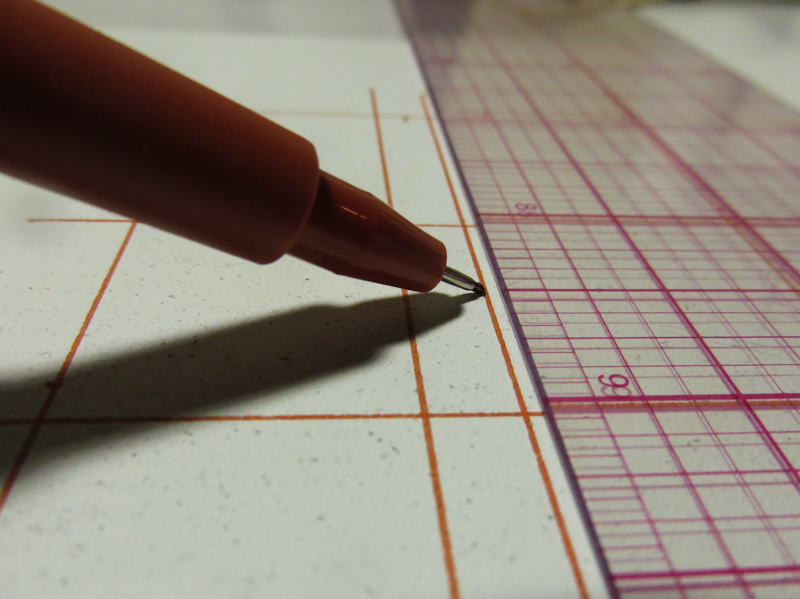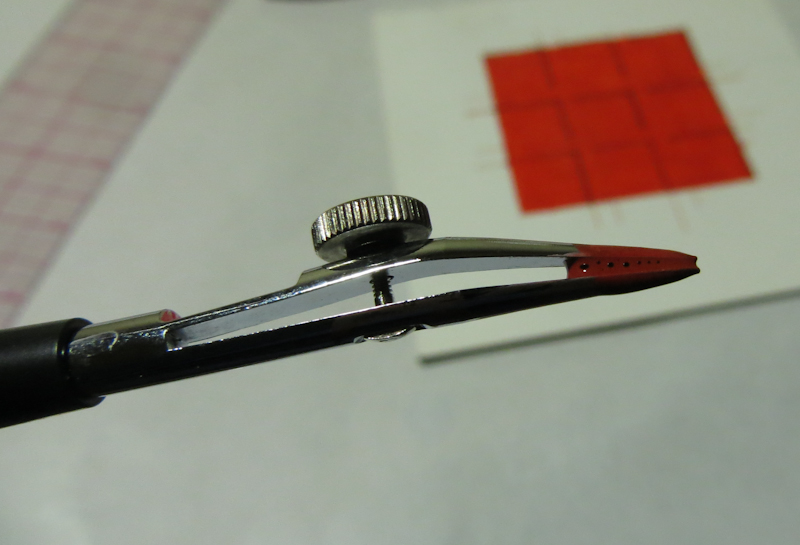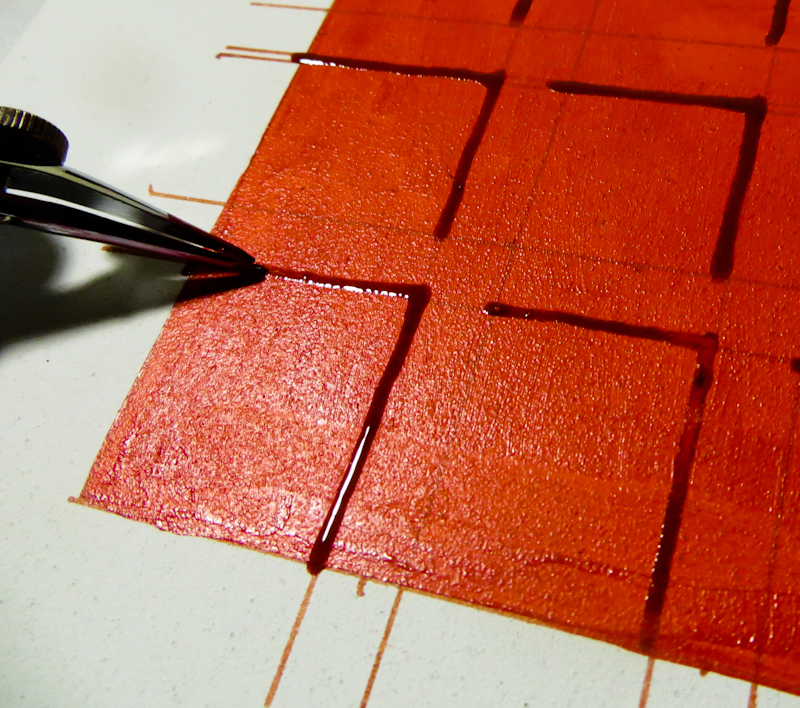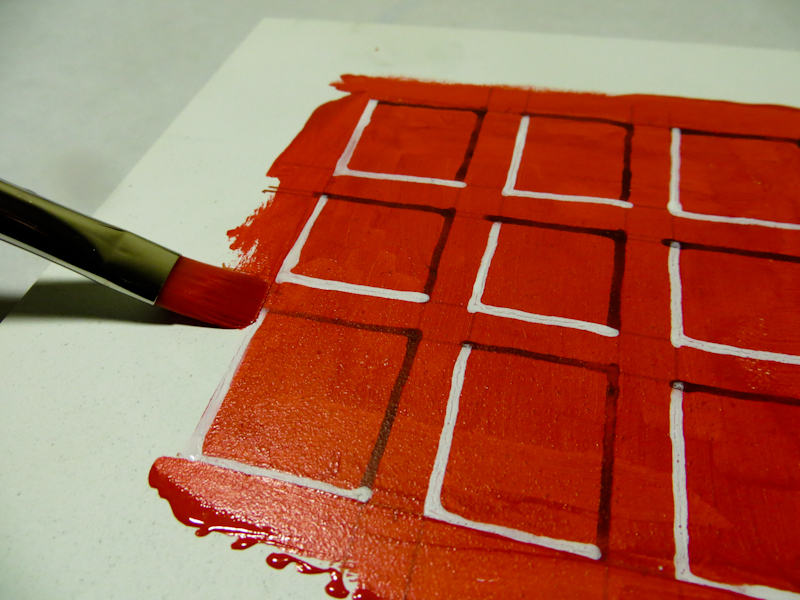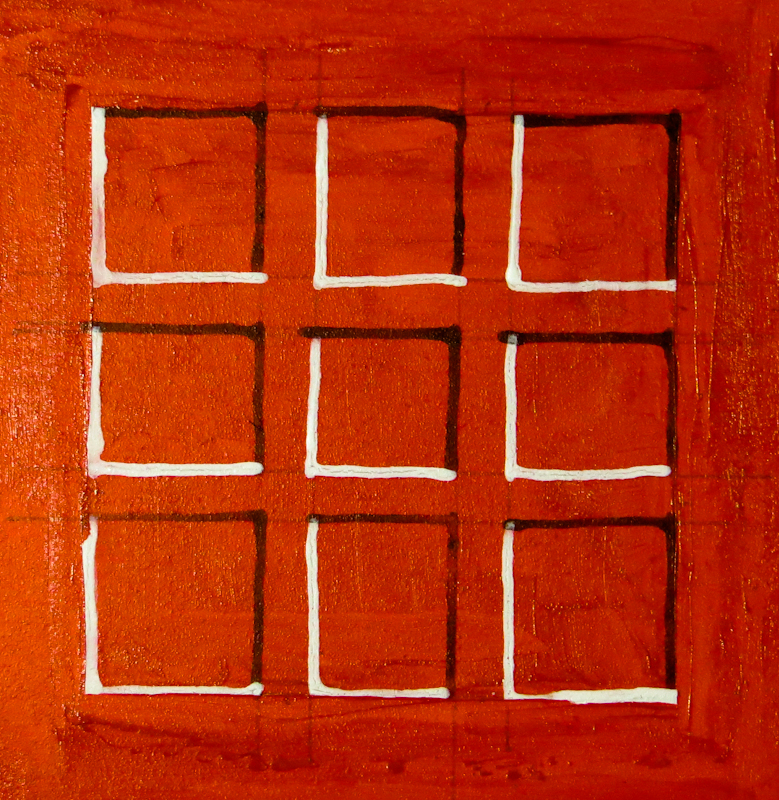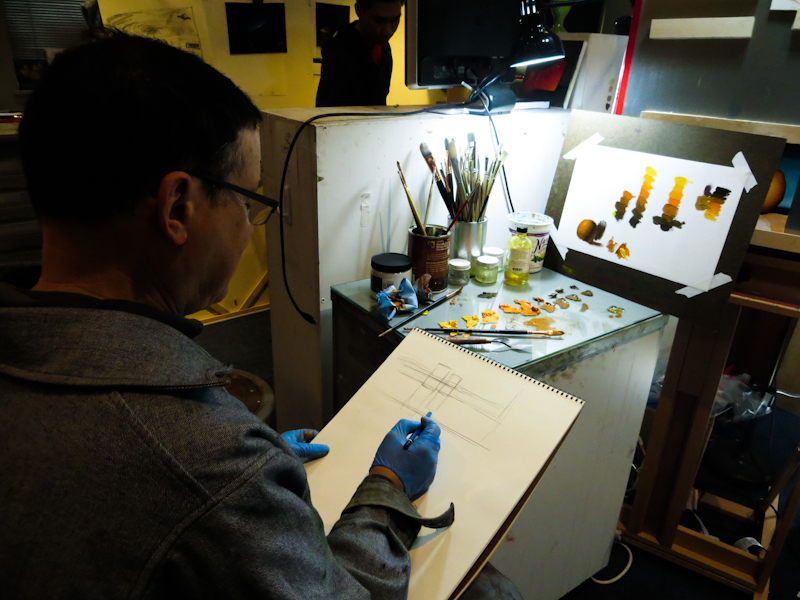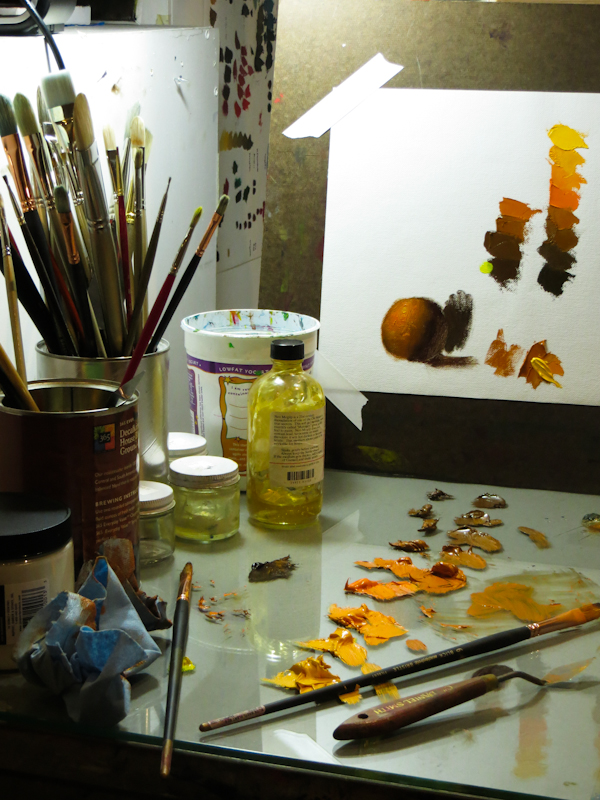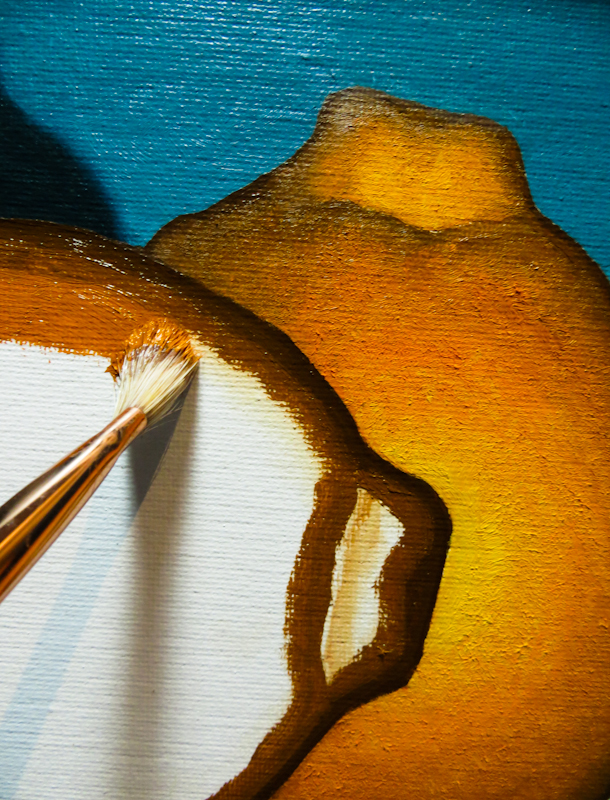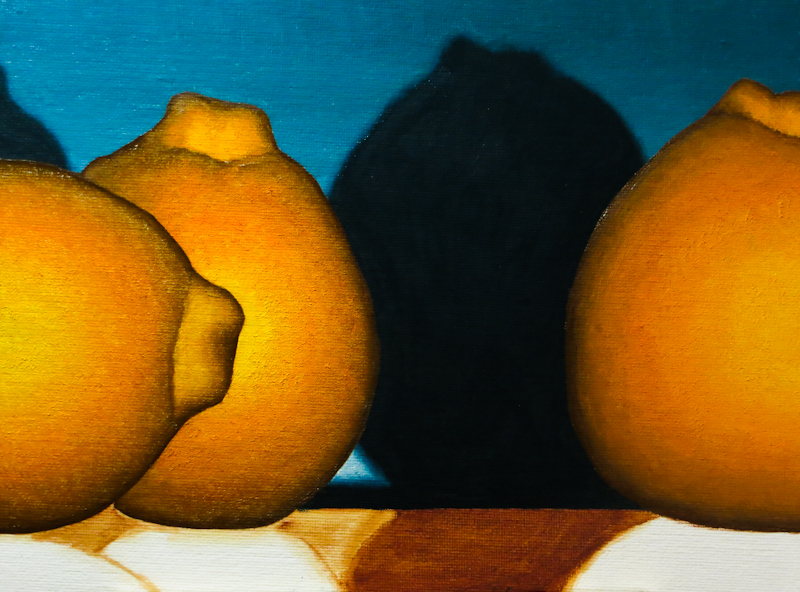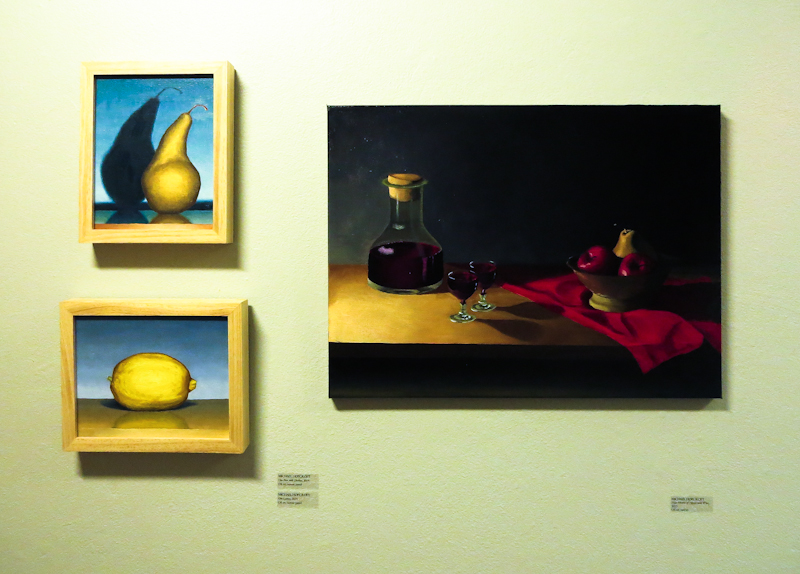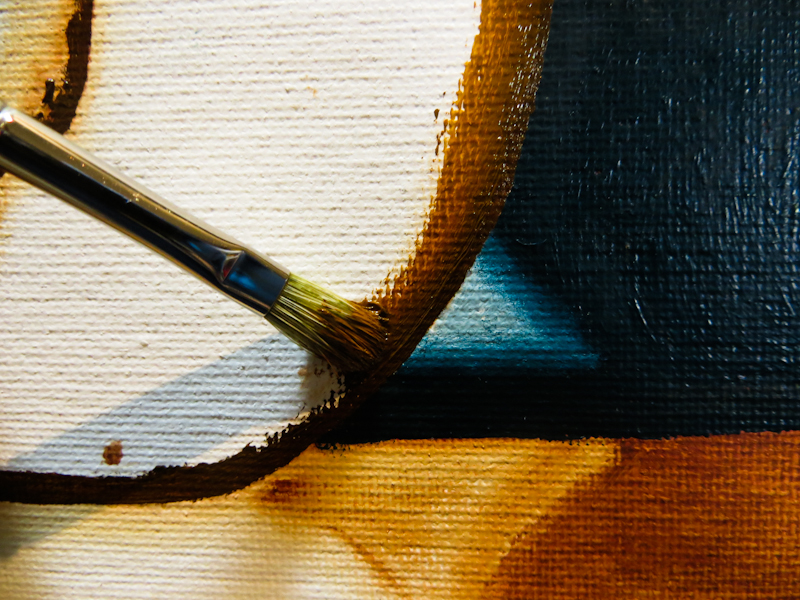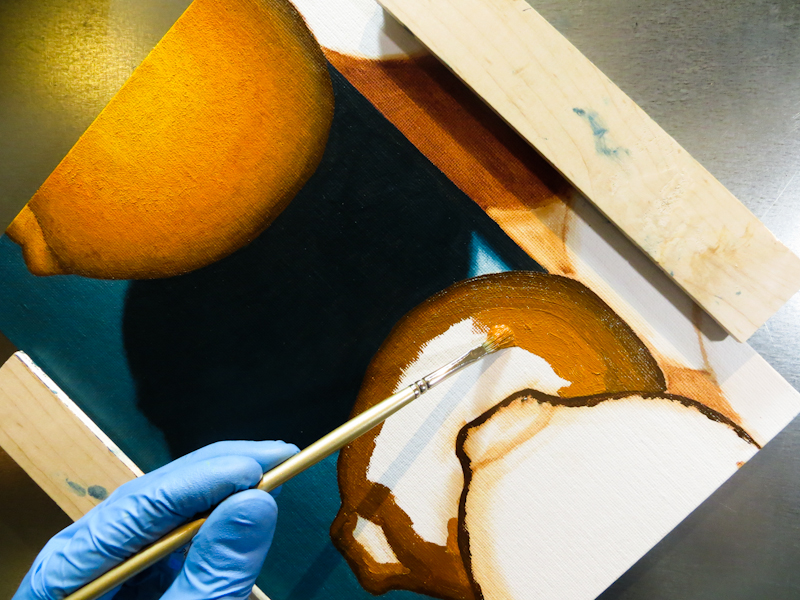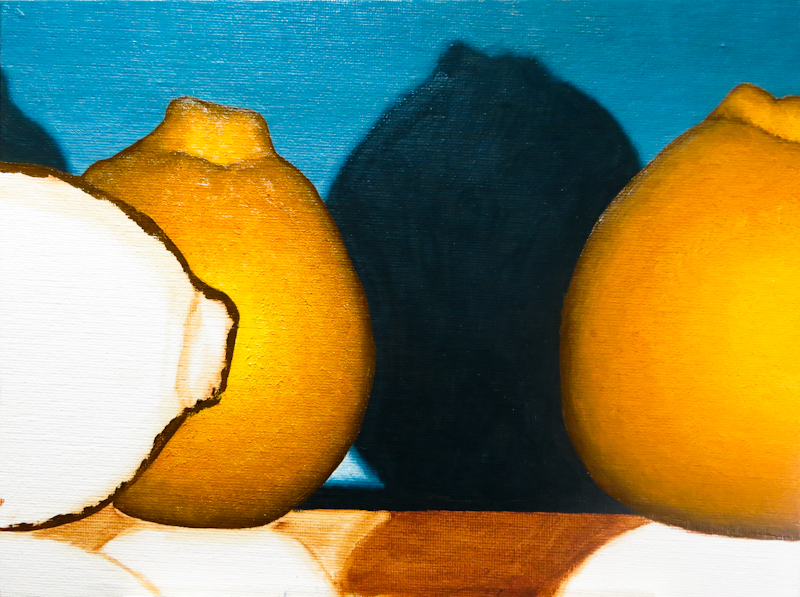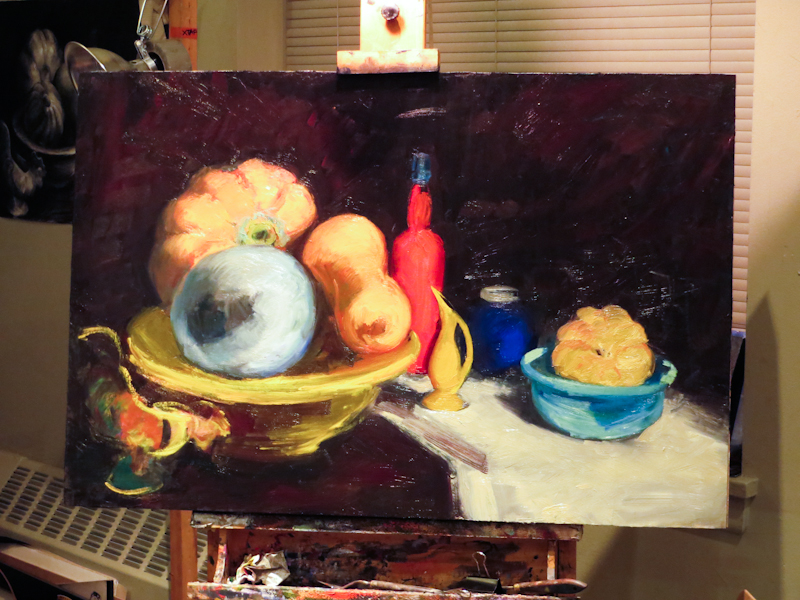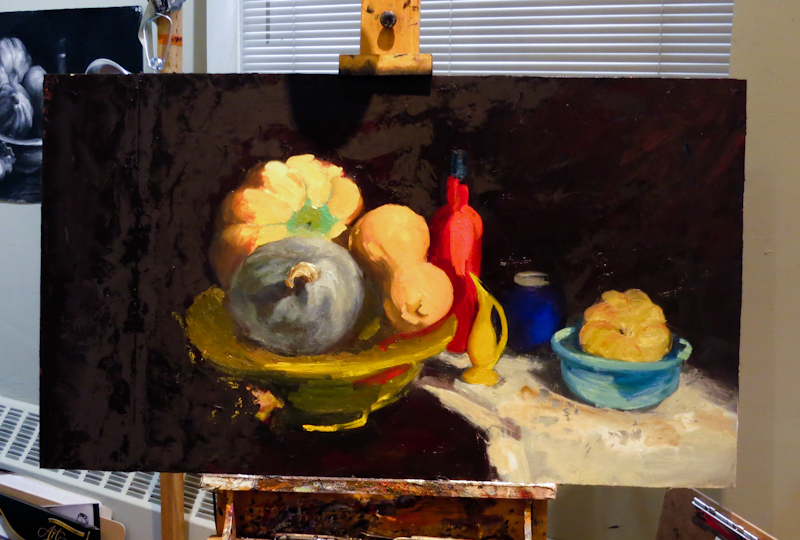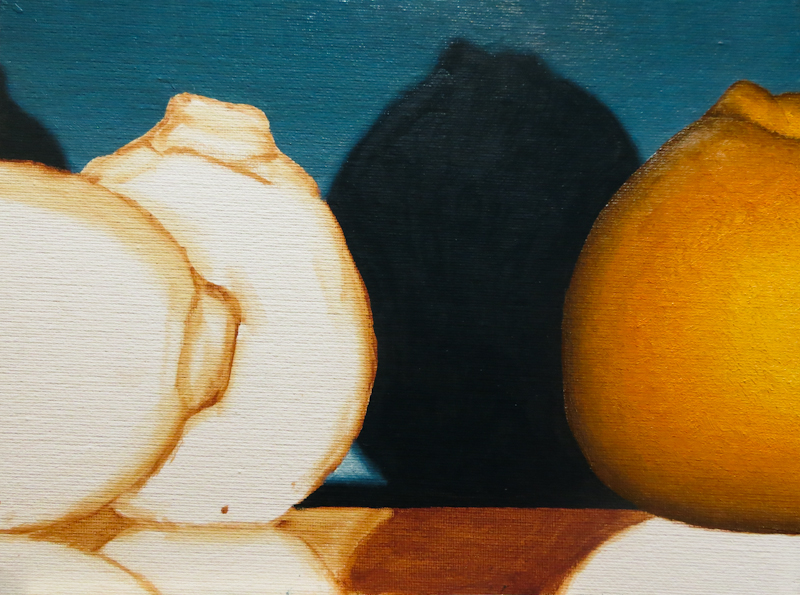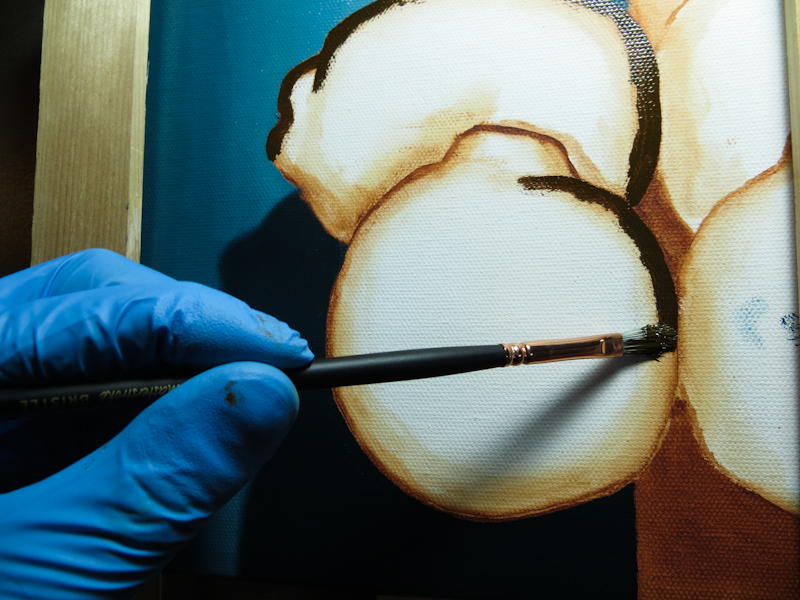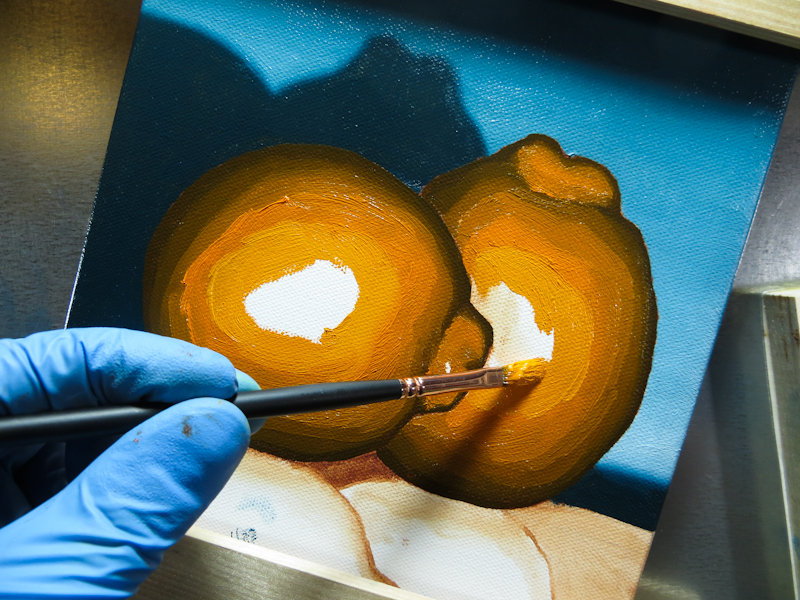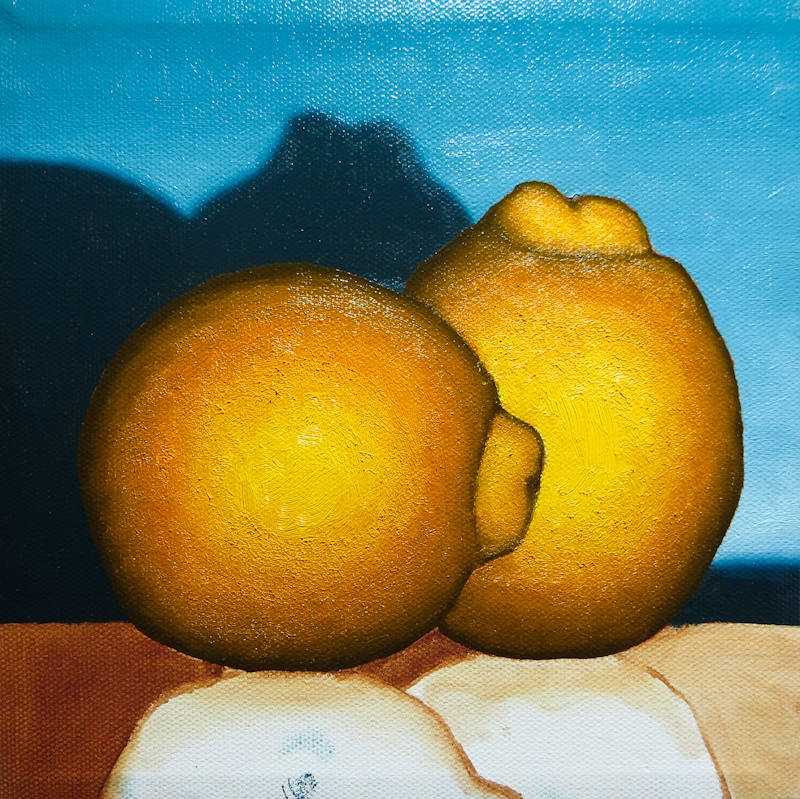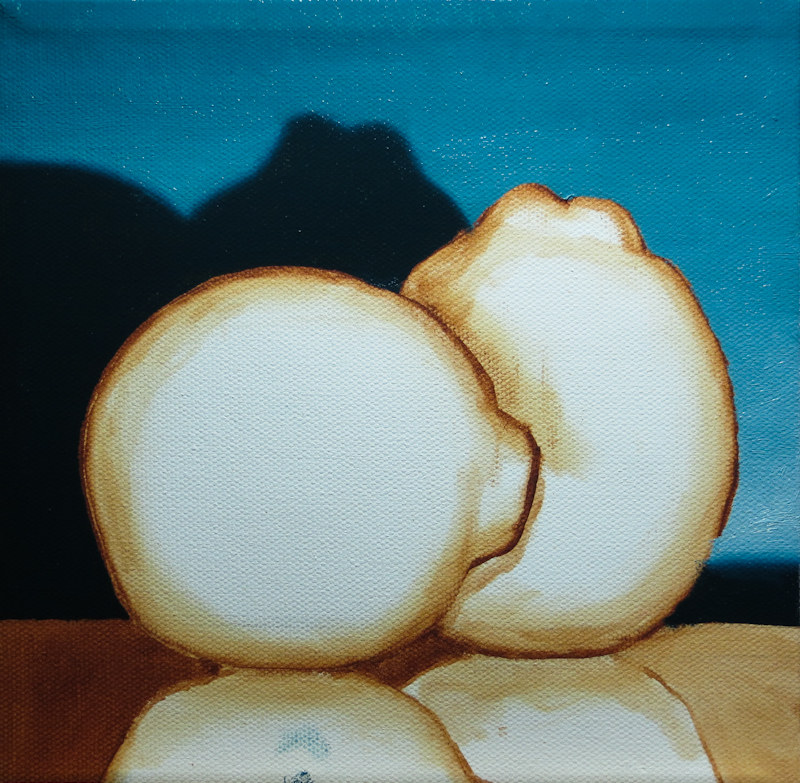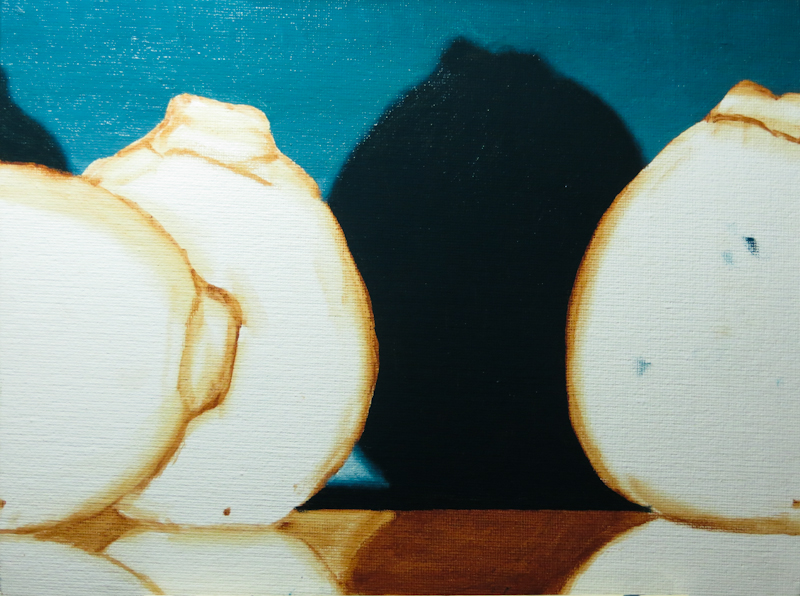Tonight I experimented with a ruling pen to paint architectural shadows and highlights. My goal was to paint something that looked like a garage door with nine recessed rectangular panels. I used acrylic paint, instead of oils, so that I could quickly dry each layer before proceeding.
I found the ruling pen easy to use for lines from 1/16 of an inch down to the smallest hairline. The pen requires thin paint – about the consistency of half and half. After diluting the acrylic paint with water I found it had become nearly transparent. This wasn’t a problem for the test, but might be a bit constraining in a real painting. I also tried diluting the paint with Golden Self Leveling Clear Gel, but this was too thick for the pen.
I think the ruling pen will be good for things like powerlines, strands of hair, and sailboat rigging. It seems to work well for architecture, but I want to compare it with a liner brush and with the technique where, instead of painting the line, you paint the areas around it.
It will be interesting to see how the ruling pen works with oils.

I let the guidelines extend beyond the bounding rectangle so that I would be able to locate them after applying the first layer of paint.
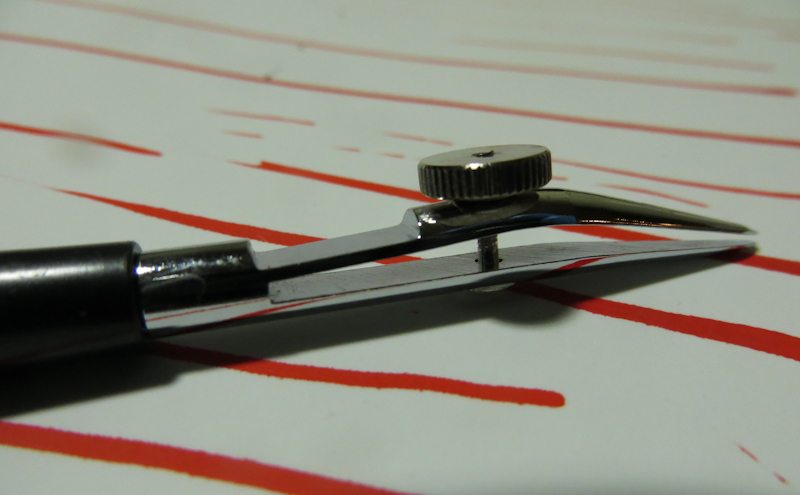
I used a ruling pen to make narrow straight lines. The ruling pen has two prongs that hold ink, or in this case, diluted acrylic paint, between them. The thumbscrew adjusts the spacing between the prongs which sets the thickness of the line.

